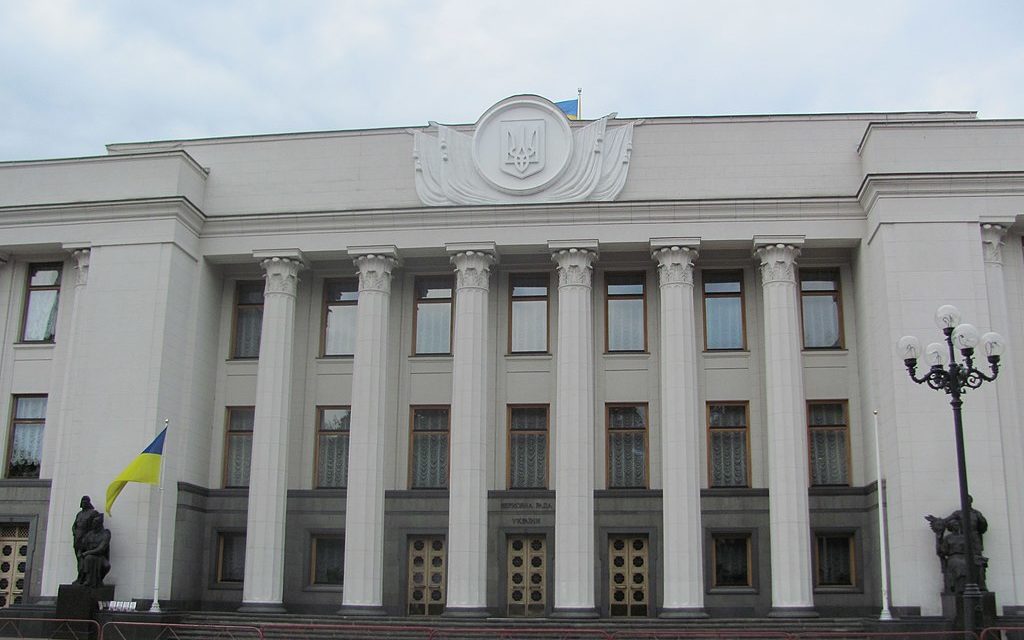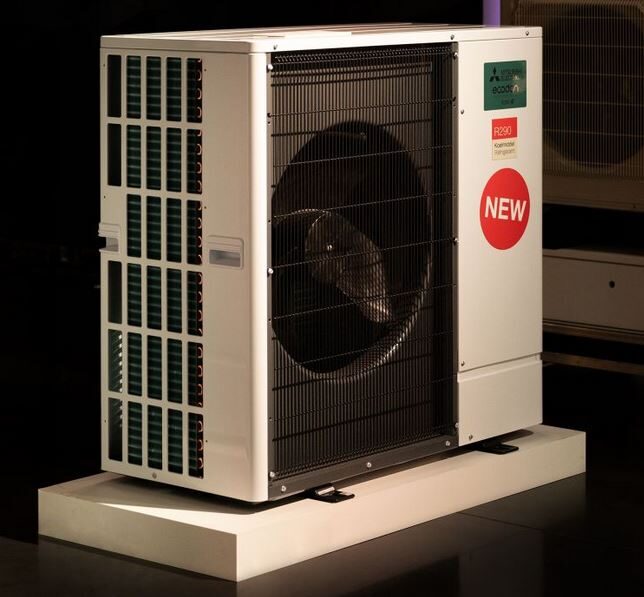Ukraine appears to have joined the ranks of the ‘solar boom and bust club’ after industry representatives and the government inked a memorandum of understanding to accept retroactive cuts to agreed feed-in tariffs.
Far from being a compromise acceptable to all parties, however, the deal signed has been likened to financial terrorism by some members of the Ukrainian solar industry.
The solution reached between the Kyiv authorities and domestic industry bodies the European-Ukrainian Energy Agency and the Ukrainian Wind Energy Agency has been followed by the filing of draft Law No. 3658 “On the Amendments to Certain Laws of Ukraine on the Improvement of Support for the Production of Electricity from Alternative Energy Sources” with parliament.
The story so far
The proposed legislation appears to draw a line under long-running negotiations between the government and renewable industry players who scrambled to take advantage of a generous feed-in tariff of €0.1502/kWh introduced by the authorities which saw the nation pile up more than a gigawatt of solar capacity in 2018 and 2019.
The government announced last year the spiralling costs of the FIT program would lead to its replacement with an auction-based procurement regime to prompt criticism from developers. During national PV trade show CIsolar in April last year, an impassioned speech by Vsevolod Kovalchuk, director of grid operator SE NPC Ukrenergo, indicated trouble ahead as Kovalchuk lashed out at the government for not doing enough in terms of regulation and future-proofing the grid by realizing its solar potential.
In October, the conflict intensified. At the Sustainable Energy Forum show in Kyiv, rumors spread on the show floor that the government had mooted the dreaded retroactive FIT cuts. At the time, industry representatives dismissed the speculation, asserting it as at best a power play from the authorities.
Cuts
“Definitely, our energy sector has been changing a lot recently,” Denys Kosoi has told pv magazine. Kosoi, chief executive of engineering, procurement and construction (EPC) services provider ETL Group. “First, major changes started with the new energy market opening last year and auctions for the renewable energy project presentation. They [the government] should have provided quotas and they should have done first pilot auctions by the end of last year. They did not.”
In March, trade body the Ukrainian Association of Renewable Energy (UARE) told pv magazine of government plans to retrocatively apply FIT cuts. At the time, the government proposed what it termed a “voluntary” FIT cut of 12.5%. If that failed to prove acceptable, UARE said, the government planned to cut solar energy payments 15-25% instead, albeit at the same time as extending the term of existing FIT contracts by five years.
The proposal was rejected.
In October, state-owned entity Guaranteed Buyer – the department responsible for making FIT payments – was still able to vaunt its 100% record for timely settlement. However, as the incentive bills mounted, Guaranteed Buyer’s financials were rapidly worsening and that payment record was not as rosy by this spring.
Decline
“We are now witnessing a rapid decline in the solar sector and the country’s electricity market is in deep crisis,” said Sergii Shakalov, CEO of Ukrainian solar module producer Kness. “Over the past three to four months, the amount of payments for the generated ‘green’ electricity [was just] 5-10%, which leads to the fact that the … owners of the generating facilities are not able to pay for the maintenance and management of PV plants, much less servicing loans etc.”
It is unclear whether the slowdown in payments was down to the government wanting a bargaining chip to bring the industry to the negotiating table, a simple result of Guaranteed Buyer’s chronic financials – worsened by the arrival of Covid-19 – or a mixture of both.
Whatever the cause, the effect of payment disruption has been obvious, with industry reps signing an agreement Shakalov dubbed “financial terrorism. “The memorandum proposed by the government is regarded by our company as discriminatory,” added the chief exec.
Counterpart Philipp Leckebusch, head of energy company DTEK Renewables, pointed the finger at the National Energy and Utilities Regulatory Commission (NEURC) and said the failure of the regulator to carry out its duties lead to a dysfunctional solar market which left Guaranteed Buyer financially crippled. The onset of Covid-19, Leckebusch suggested, further exacerbated the situation.
Curtailment
In April and May another crisis was brewing. As grid company director Kovalchuk had warned a year earlier, the electricity network proved unable to cope with the big volumes of solar coming online in response to that juicy FIT level. The government department responsible for compensating solar project owners for the resulting curtailment was none other than struggling Guaranteed Buyer. And while the right of generators to claim compensation was not disputed, no system was in place to calculate the amount of energy wasted to keep the grid stable.
In terms of the projects worst affected by the retroactive FIT cut draft law thrashed out in Kyiv, holders of agreed payment contracts might at least take some solace from the knowledge it is facilities which are under construction right now which will take the heaviest pain. The proposed legislation includes timelines for the commissioning of new solar projects, together with penalties. For instance, the draft law stipulates projects which miss their August 1 deadline will surrender around 60% of the already-reduced feed-in tariff, according to ETL Group’s Kosoi. That would mean projects which started life with the promise of generating returns of €0.1502/kWh might bank only €0.045.
Kness CEO Shakalov said project commissioning timelines would be shortened under the legislation being considered by parliament with new bureaucratic hurdles being added at the same time. On top of that, said the chief executive, deadlines would not be waived in the event of promised grid infrastructure not materializing on time. That, said Shakalov, opens up a significant corruption risk.
Legal preparations
“We are preparing for the worst and hoping for the best,” said ETL’s Kosoi. “Collective [legal] claims are being prepared from our companies that own solar power plants and from the owners of the plants we did EPC for.” Law firms, too, have sniffed their opportunity and begun publishing information sheets about the retroactive feed-in tariff cut plan perenially dubbed a “FIT restructuring” by the government. Foreign companies affected, note the lawyers, would qualify for commercial arbitration over any reduced income.
“We are currently analyzing the text of the existing bill, as well as its alternatives, with a view to possibly defending the interests of investors [with] international authorities, since a significant part of investment was attracted [into solar], including from international banks,” said Shakalov.
Spain, Italy and Czechia have all resorted to retroactive FIT cuts in the past – and paid a collective bill running into several hundred million euro after 50 or so arbitration cases. Even if legal claims prove successful, ETL boss Kosoi said, the fear would be that the government declare a default in response, or opt to extend any compensation schedule imposed.
Investors
“The state should protect investors who believe in the country, investing their capital, and form communication at the national level focusing on the need for green and clean energy, as well as the climate emergency declared in the world,” said Kness’ Shakalov.
The FIT-related imborglio will not halt Ukraine’s energy transition, according to Kosoi, who said: “Unlike our government, we are not going to stop the development of [a] green future. At the moment we [have] implemented a few rooftop projects and we are finishing the connection of [a] 2 MW power plant in the Dnipro region. ETL Group also is an EPC contractor in pre-PPA [power purchase agreement] signed projects with a total capacity of more than 65 MWp only in the Dnipro region. We sold two ready-to-build projects – [with a capacity of] 15MWp-plus – at the end of last year. Others are on pause at the moment because nobody wants to take risks of financing them at the moment. Neither do we.”
Fellow Ukrainian EPC Helios Strategia echoed that positive sentiment.
“Despite our clear awareness of the consequences of the retroactive FIT cuts, we are still thinking positively about the future of the Ukrainian RES [renewable energy source] market,” said chief marketing officer Vladyslav Shevchenko. “Everyone should recognize that crisis conditions that were created by different reasons had to be changed quickly and resolutely. Now Helios Strategia Group is glad because we have at least a temporary solution and work direction. In perspective, a strategic approach needs to be used and, frankly speaking, we are sure that long-term decisions must be accepted based on a much fairer foundation.”
Responsible
DTEK’s Leckebusch has also attempted to pour oil on the troubled waters. “Investors and representative associations acted in a very responsible manner and contributed to a resolution of the serious problems the market is facing,” he told pv magazine. “The result is the signed memorandum which we strongly hope will find its way to a legally binding obligation when passed as a revision of the RES law by lawmakers. RES investments in Ukraine have been one of the few investment success stories for Ukraine so far and it is now the responsibility of the authorities to quickly stabilize the market and return to a sustainable plan for the future development of RES.”
It is notable that the severe cuts proposed to the solar FIT would not apply to wind power under the proposed legislation. While solar projects installed after August 1 are set to lose 60% of their FIT, wind facilities would receive 97.5% of the agreed monies.
While Ukrainian solar companies were ready to speak out about the retroactive payment cuts, the foreign EPCs and developers approached by pv magazine have remained silent on the issue thus far.
With the draft legislation expected to be adopted by parliament, the fallout on the Ukrainian solar industry remains to be seen. Spain and Italy have both rebounded strongly after draconian payment restrictions – albeit under later governments of a different stripe. One thing is for certain, the lawyers look set for another bumper payday.
This content is protected by copyright and may not be reused. If you want to cooperate with us and would like to reuse some of our content, please contact: editors@pv-magazine.com.




• 2.5TWhr (+/-) of Electricity is produced Annually in Ukraine
• At Euro 0.15/KWhr…. the TOTAL FIT is worth Euro 375 Million/yr.
• The (Avg) Electricity Tariff is about Euro 0.07/Kwhr
• The Total “Subsidy” for… Non-Polluting Green Power is about Euro 200 Million/Yr….
• The Green Solar Power reduces CO2 by 2.5 Million Tons (@ 1 Ton/MWhr)
• This CO2 reduction also has corresponding lower Gaseous Emissions and Health Costs, besides a clearer skies for…. ALL.
• It is up to Ukrainer’s to decide whether it is worth it or not…. and remember…. this is just a beggining… just get used to higher Clean Energy prices and clean up your Electrical System by reducing losses and then shutting down those polluting fossil plants.
• Retroactive FIT reductions… is not a good idea…. a contract is…. a contract…. this faith between the Govt and its people is what makes countries run….. smoothly.
For countries like Ukraine there is better things to focus on than feed in tariffs specially at 150$/MWh